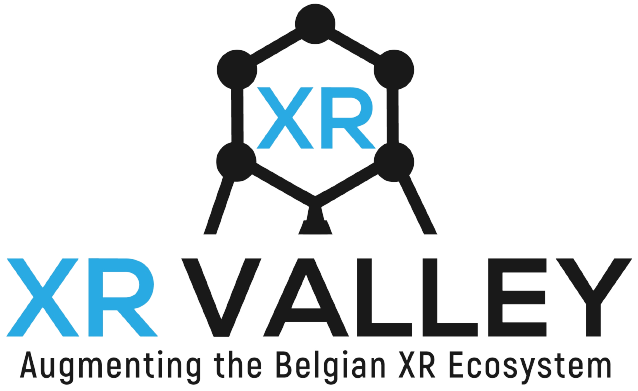XR Trends 2025: What’s Next for the Industry?
As we move into 2025, the XR landscape isn’t just evolving—it’s transforming in ways that demand attention from anyone working in the field. With the global market expected to skyrocket past $300 billion, XR is no longer a novelty or a future promise; it’s a driver of innovation across industries. To stay ahead, we must look beyond the surface and focus on the trends shaping this transformation.
Augmented Reality: Taking Over the Enterprise
AR has proven itself far beyond gaming and gimmicks. In 2025, it’s set to become indispensable in enterprise settings.
Real-Time Data Visualization: Engineers, designers, and healthcare professionals will seamlessly interact with 3D models or dashboards overlaid in their environments. The adoption of tools like Microsoft’s HoloLens or emerging AR wearables will accelerate.
Immersive Training: AR will bridge the skills gap in industries like manufacturing, enabling risk-free, scenario-based learning. Expect large-scale deployment of AR-powered training modules for tasks as diverse as aircraft maintenance and surgical techniques.
Retail Innovations: Shoppers will try on clothes or visualize furniture in their living rooms—all from home. AR is set to be the new standard for personalized customer experiences, with measurable impacts on conversion rates.
Virtual Reality: Revolutionizing Learning and Collaboration
While VR’s entertainment value remains high, its transformative potential in education and teamwork is the real game-changer.
Immersive Learning Environments: From historical recreations to virtual biology labs, VR will give learners unparalleled access to hands-on experiences. Institutions worldwide are already piloting these projects, but 2025 will see scalable adoption.
High-Risk, Low-Stakes Training: Professions that rely on precision under pressure—pilots, emergency responders, surgeons—will expand VR use in training. The realism of VR simulations is increasing, offering safe yet challenging environments.
Global Collaboration 2.0: Virtual coworking spaces like Meta’s Horizon Workrooms and Spatial will be refined for natural, engaging interactions. These spaces will allow distributed teams to collaborate as though they’re in the same room, reshaping how we work together.
Mixed Reality in Healthcare: A Groundbreaking Shift
MR will revolutionize patient care and medical training alike, with practical applications becoming widespread.
Surgical Assistance: From pre-surgery visualization to intra-operative MR overlays, surgeons will enhance their precision and reduce errors. The integration of MR with AI diagnostics could take outcomes to the next level.
Interactive Medical Training: Holographic simulations will allow medical students to practice procedures and diagnose virtual patients, preparing them for real-world challenges without risking patient safety.
Empowered Patients: MR isn’t just for professionals; patients will better understand their diagnoses and treatment plans through interactive, visual representations.
The Metaverse: From Hype to Practical Applications
Forget the nebulous “metaverse” chatter—2025 is about delivering concrete applications for virtual worlds.
Realistic Avatars and Identity: Expect increasingly sophisticated avatars, down to subtle facial expressions, enabling nuanced, authentic self-expression.
Digital Economies with Tangible Impacts: Virtual goods and services are maturing, with blockchain infrastructure ensuring ownership. By 2025, fully virtual businesses may outpace their physical counterparts in profitability.
Specialized Social Platforms: The rise of niche-focused virtual spaces will replace one-size-fits-all metaverse platforms. Think immersive venues designed specifically for art galleries, esports arenas, or professional networking.
Hardware Advancements: Laying the Foundation
No software breakthrough can thrive without equally capable hardware. The next generation of XR devices will unlock new possibilities:
High-Fidelity Displays: Micro-LED and advanced OLED displays will eliminate screen door effects, delivering near-photorealistic visuals.
Tactile Feedback: Haptics are finally catching up. Devices like gloves and full-body suits will allow users to feel textures, vibrations, and even temperature changes in virtual worlds.
Wireless Mobility: Improved 5G and Wi-Fi 6 standards will untether devices, reducing latency and enhancing the feeling of presence.
Intuitive Interaction: Beyond Controllers
How we interact with XR environments will be pivotal to adoption and engagement.
Gesture Control: Precision gesture tracking, such as hand recognition on standalone devices, will make interacting with digital objects feel natural.
Voice Integration: Conversational AI will seamlessly integrate into XR, enabling voice commands for everything from complex simulations to casual navigation.
Early Steps Toward BCI: Brain-computer interfaces, while still in development, are emerging as a frontier for hands-free interaction. By 2025, we might see prototypes capable of translating basic intent into XR actions.
Final Thoughts: Preparing for XR’s Evolution
For those working in XR, 2025 is a turning point. The success stories will come from teams and individuals who prioritize adaptability, user-centric design, and practical application of these technologies. The tools to create immersive, meaningful experiences are here—the question is how you’ll wield them.
Are you ready for the next wave of XR innovation? Let’s shape it together!
